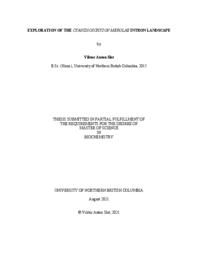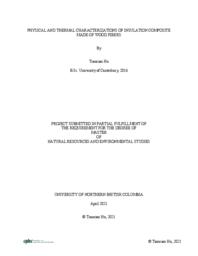Wimmers, Guido
Person Preferred Name
Guido Wimmers
Related Works
Content type
Digital Document
Description / Synopsis
The eukaryotic process of pre-mRNA splicing involves the removal of noncoding intron sequences and the fusion of the remaining protein-coding exon sequences. The splicing reaction is catalyzed by the spliceosome, a dynamic multi-megadalton ribonucleoprotein complex that, in humans, is composed of 5 small nuclear RNAs (snRNAs) and over 200 associated proteins acting on more that 200,000 introns present within 25,000 genes. The unicellular red alga Cyanidioschyzon merolae possesses a more tractable splicing environment, with only 4 snRNAs and 75 associated proteins interacting with 27 annotated introns found in 26 our of 5,331 genes. Intron-rich genomes can confer benefits to their host species such as improved gene expression, incredible proteomic diversity, and increased genetic stability. This raises the question of why intron-poor C. merolae has retained such a small number of introns and a dramatically reduced spliceosome. A comprehensive investigation into the precise role that introns play in C. merolae would require the systematic removal of introns and an analysis of the effects thereof. The ability to elucidate the role of splicing in C. merolae via genome-wide intron deletion, however, hinges on the feasibility of establishing the efficiently scalable CRISPR genome engineering tool in C. merolae. It also follows that such an endeavour would require an accurate picture of the intron landscape of C. merolae, and since the number of annotated introns in C. merolae is relatively small, it is especially vital to determine whether any introns are missing from the C. merolae annotation. To that end, a stable and inducible Cas9-expressing strain of C. merolae was successfully developed. Transcriptome analysis using RNA-seq data revealed the discovery of 11 novel introns and 1 misannotated intron, as well as the presence of alternative splicing in the form of alternative splice site usage.
Origin Information
Content type
Digital Document
Description / Synopsis
Currently, mineral fiber or cellular plastic insulation materials dominate the building construction market because of their relatively competitive price and low thermal conductivity properties; however, the environmental impacts of cellular plastic insulation materials during their whole life cycle are significantly higher. Additionally, the forestry sector in Canada generates approximately 5.38 × 106 oven-dried tons of wood product residues per year and there are opportunities to further process and use them as the raw materials for producing wood-based fiber insulation boards. The purpose of this study is to investigate the methods to utilize the woody residues and process them into wood fibers to form insulation boards. Additionally, an eco-friendly casein adhesive was chosen to bind the wood particles together. The boards were successfully formed and have thermal conductivity values ranging from 0.057 to 0.078 W/mK, based on different board densities and moisture contents, which satisfy the minimum requirement of the ASTM insulation standard. Thus, this study of forming wood-based fiber insulation boards shows opportunities of reducing the environmental impacts and reducing the building energy consumption due to heating or cooling at the same time.
Origin Information


